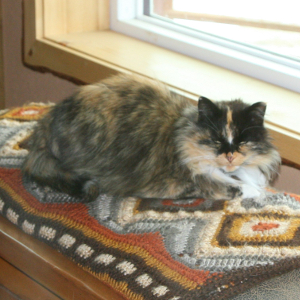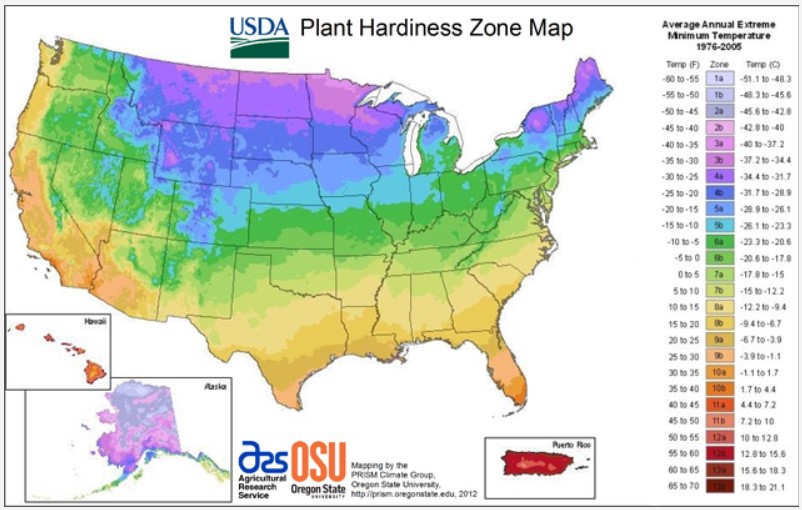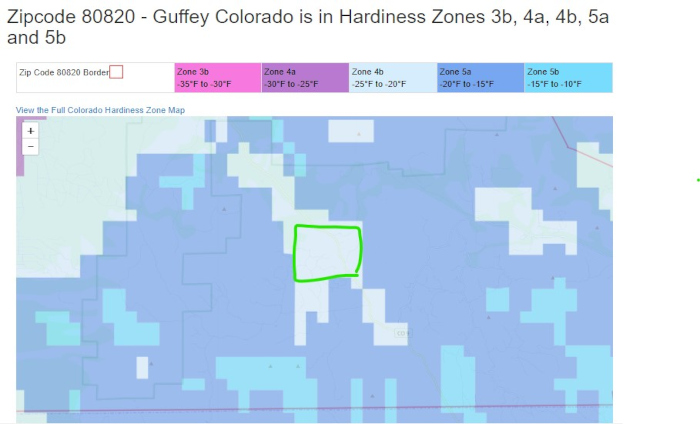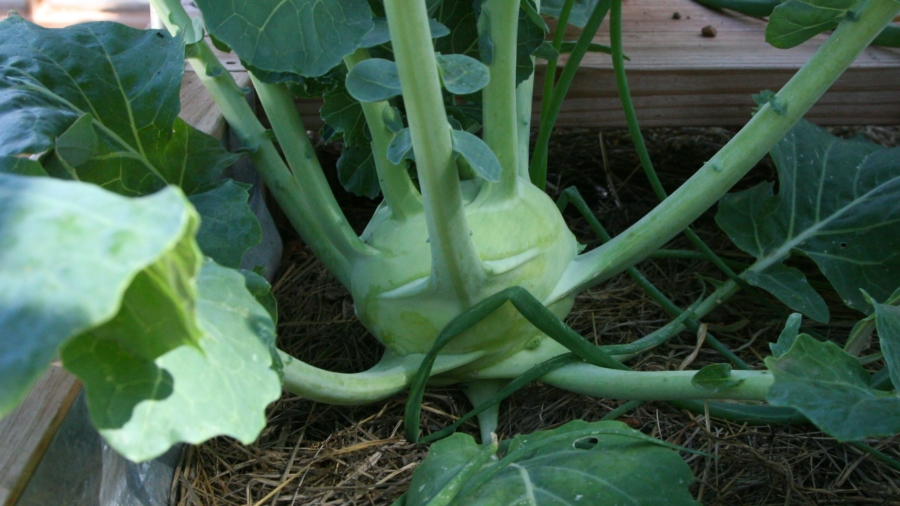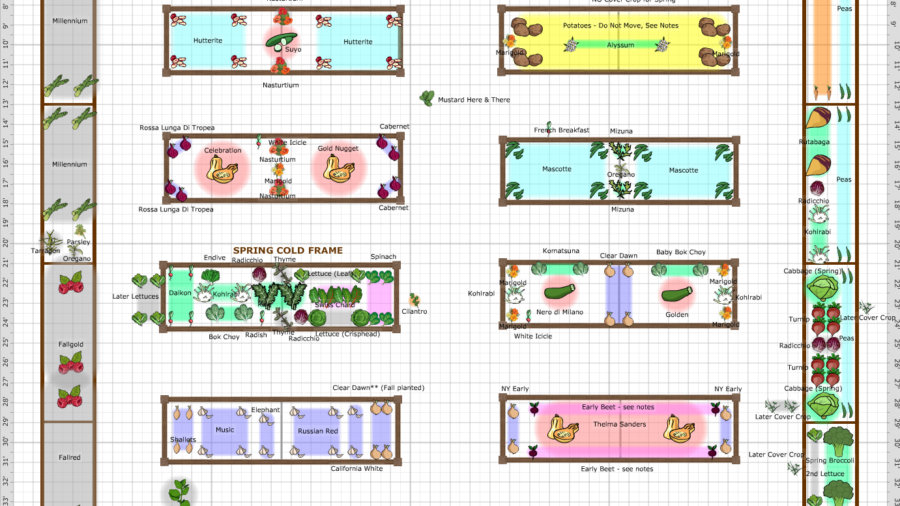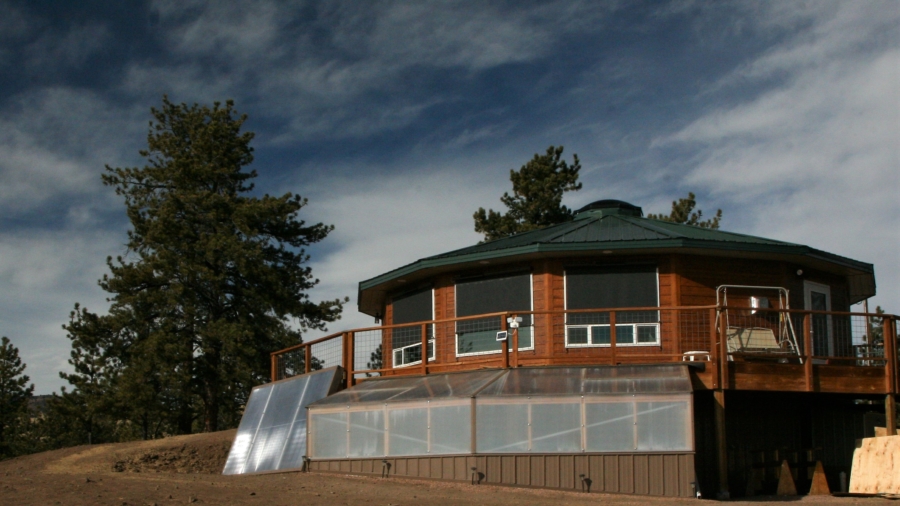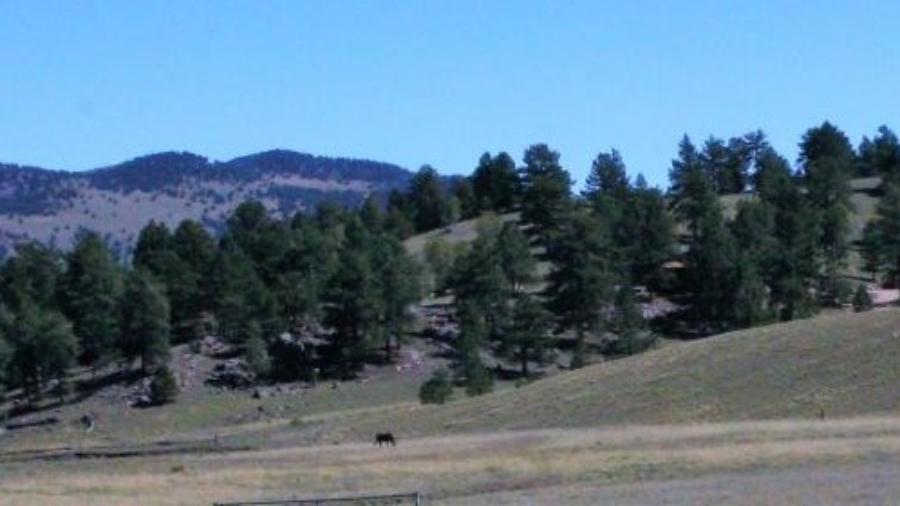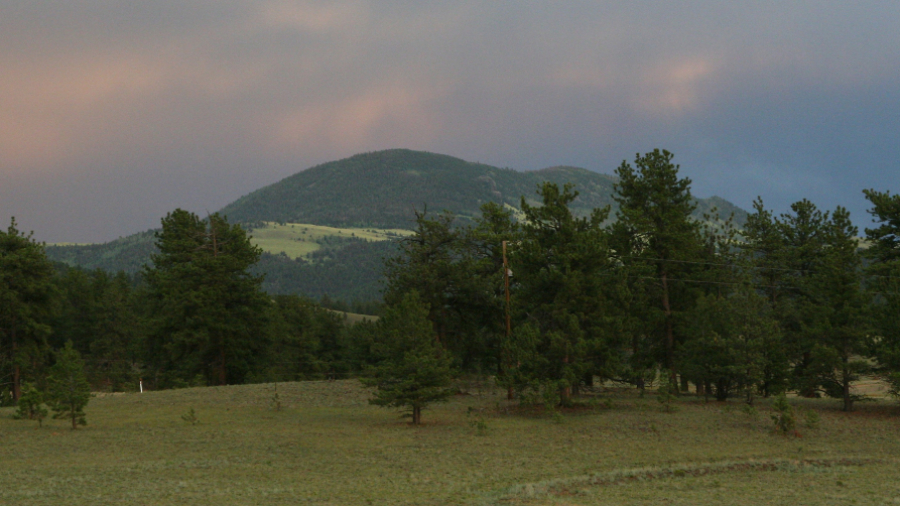WHAT GROWS HERE & WHAT DOES NOT
This will now be my 3rd year gardening at 9,000 feet. After some trial and error, I’ve chosen only to grow the things that will grow well in the outdoor garden, and use my limited greenhouse space in the summer for a few favorites while saving some room for early fall planting there. Some of the vegetables that grow very well have not been my favorites (kale, cabbage, kohlrabi, rutabagas) but since they do grow well here and are good for us I’m learning to like them more and cook them in new ways.
Our last frost date in spring to the first frost date in the fall is about 92 days. I carefully select only the varieties that boast the shortest maturity period. Nothing grows as fast as promised. If the seed packet indicates 60 days, in most cases it will be 80-100. For example, I planted Masai Hericots Verts bush beans with a maturity range of 58 days. I harvested them about 88 days after planting. Often, seed varieties boast that they are well-suited for northern climates. I’d thought that those would also work well in high altitudes, but no. We do not get as many sunshine hours in the day as do northern areas in the summer. I believe that this, in addition to our cool nights, slows down the growth of many plants. Here is a list of what grows well and what does not.
WHAT GROWS WELL OUTDOORS
- broccoli, cabbage, kohlrabi, kale, bok choy & all brassicas
- lettuce, spinach, chard and a variety of other greens to be eaten fresh or sauteed
- root vegetables such as beets, rutabagas, turnips, radishes and carrots
- potatoes
- garlic
- peas
- summer squash, zucchini (they need covering early on when it’s cold, and help with pollination)
- herbs such as parsley, cilantro, thyme, sage, oregano, dill
GROWS SOMEWHAT OUTDOORS, BUT NOT WELL
(I do still grow these outdoors, but they’re not the best)
- onions (they don’t get big and the season is too short & cool for them to bulb well, but after a successful experiment last year I’m giving them another try)
- garlic
- winter squash (So far I’ve had only one variety that actually produced squash, Gold Nugget, and it did not taste good. I’m determined to get some winter squash to grow based on the success of some other local gardeners, so I am trying two new varieties this year.)
- bush beans (a smaller yield than in warmer climates, but they are suitable)
- celery (got some thin celery last year, am trying one more time)
DOES NOT GROW WELL OUTDOORS
- tomatoes or peppers (they just began to ripen when the fall frosts began, even though they were faithfully covered each night)
- corn (tried an Alaskan variety bred for short, cool seasons, but it did not produce)
- dry beans (it froze before I had a chance to harvest these)
- cauliflower (grew very spindly, did not make a good head)
GROWN IN THE SUMMER GREENHOUSE
- tomatoes
- peppers
- cucumbers
- basil
- winter squash
ORGANIZATION, PLANNING & RECORD KEEPING
I’m kind of a nut when it comes to organization and planning, and it may border on overkill. Sometimes I think I may spend more time with this than I do in the garden. I do most of this organization work during the winter when I have the extra time on my hands. When garden time comes, all I need to do is minor updates & notes. My methods for organizing and planning are not specific to high-altitude gardening, but are extra helpful when planning a garden that only grows in a short season, or for making full use of limited space in the greenhouse year-round.
SEED SELECTION
When I begin the process of seed selection for the year, I begin an Excel spreadsheet. Mine looks something like this. I start this process in January, and get seeds ordered in February, before the varieties I’ve chosen are no longer available (which has happened before).

I begin by deciding what types of plants I plan to grow, and make a list. The first 3 columns show whether I will grow them in the greenhouse, the cold frame or the outside garden. Then I begin looking at various websites and books that I have, to determine what varieties I might like. I add notes about whether they are organic, how many days to harvest, the vendor, price and miscellaneous notes about the varieties. I start with a BIG list, then begin to delete those I decide not to order. Eventually my list looks something like the one above, which I can sort by vendor, then go to that website and use this as my order list. The varieties with blank spaces indicate seeds I already have on hand.
KEEPING NOTES
After this, I have plenty of time to add information about all these seeds to my notebooks, and to look up information regarding when to plant the seeds, whether to start them indoors or in the garden, etc.
For this process, I use Microsoft One Note. I prefer the Microsoft Office desktop version, but it is also available as a free app, available for Windows or Apple operating systems, or online with any browser. I use this extensively for all my garden planning and note-taking.

These are the main sections (Tabs) I use:
- PLANNING: links to websites I refer to, companion planting information, seed companies, etc.
- BEDS: information about what treatments have been given to each bed in my garden
- GREENHOUSE: general planning information for the greenhouse
- HI-ALTITUDE: various information about high-altitude gardening, my weather and frost date information, best types of vegetables for high-altitude, etc.
- FUTURE: ideas to explore in the future
- NATURE: I keep logs of when I view various birds, squirrels, deer, elk, antelope, various wildflowers, etc.
- PESTS: pests I see, what I do about them, information about pest control
- SOIL & AMENDMENTS: information about fertilizers, soil amendments, etc.
-
PLANTS: This is a group section with sub-sections including: Alliums, Beans, Beets, Brassicas, Carrots….you get the idea.
- Each of these sections contain pages of what I’m planting, including all the varieties I’m planting, dates started, transplanted, harvested, days to harvest, notes about how they did, etc. I also include growing information here.
Here’s a look at my “Brassica” section (under the “PLANTS” group) as an example, showing the page of 2017 Greenhouse Brassicas:

This year I’ve made a separate One Note Notebook, I call “Guffey Veggies”. I used to keep all this information in one notebook, but it got too full of stuff and hard to organize. Now I’m using this “Guffey Veggies” notebook to keep notes on all the seeds I choose. Since I order most of my seeds online, it’s easy to copy and paste this information into the notebook for future reference. Those pages look something like this:

PLANNING & PLANTING
One more thing I did this year was to create a spreadsheet to help me know when to start each vegetable for the greenhouse, the cold frame and the outside garden. It looks like this:

Let me explain this!
- WHERE: Greenhouse, Cold Frame, or Outside
- SPECIES, VARIETY: vegetable to plant
- DAYS: Days to maturity
- HOW: whether I will start this inside in soil blocks, or direct-sow outside
- START: the day I will start the seeds. This is automatically calculated from the columns that show when I plan to transplant out, and the number of weeks/days the plant will remain inside before planting.
- WEEKS INSIDE, DAYS TO TRANSPLANT: weeks, days from sowing to transplanting out.
- TRANSPLANT OR START OUTSIDE: gathered from growing information I’ve collected
- OUT ETA: The date I plan to transplant or sow outside
- HARVEST ETA: This is the date transplanted out + the number of days to harvest.
- 2018 ACTUAL HARVEST: to be filled in as the summer progresses
This spreadsheet can be sorted as desired: by coldframe, greenhouse, outside, by start date, etc. Right now I’m finding it most handy to sort by start date, so I know what I need to be doing in the coming weeks. As you can see, I’m planning to plant outside in the coldframe sometime around May 15. This will depend on the weather—some things may go out sooner or later than the 15th.
Hopefully all of this is helpful to anyone reading. Everyone has their own way of doing things, and others may do just fine without all this time-consuming organization. If you just “wing it” you may be just as successful, but I find it helpful to do all of this and keep track of what I’m doing so I can go back the next year to determine what worked and what didn’t.
For instance, last year I started my fall plantings of beets, cabbages, broccoli and a few other things too late. They just didn’t have time to grow before fall. I also found that starting most things in the ground last year wasn’t successful. I am glad to have all of these dates & information written down from last year. This year I will start almost everything indoors and plan to transplant them out after they’ve sprouted and gained a little growth. (I will still start carrots & peas outside, but that’s about it.) I know that in my cool weather, the harvest dates for almost everything will be later than expected, but I used the published “Date to Harvest” anyway. I will compare this with my actual harvest dates.
GREENHOUSE CONSTRUCTION
In the planning stages of building our house here we had always thought we would eventually build a greenhouse. At our former location in Wellington we had a small, non-heated greenhouse, which provided us with cold-tolerant things like spinach, kale, chard, lettuce and beet greens throughout most of the winter. It also provided a place to finish and harden the seedlings I had started under lights indoors. It was attached to the south side of our house, under our deck, so the north side of the greenhouse was protected by the house. (See photos of this one below.) It was a great addition to the garden there, so we planned to do it again.
We mulled over whether to attach it to the house or build a free-standing greenhouse. Here are some of the pros & cons:
Attached to the house:
- Water and electricity readily available
- North side protected by house
- Easily accessible in winter
Free-Standing:
- More available space for a larger greenhouse
- More available light for the plants
- Would be farther from the house; less accessible
- Water and electricity would be more of a challenge
- Would require insulation, particularly on the north wall

We chose to attach the greenhouse to the house, under our deck on the south faces. (I say “face-s” because with a 14-sided house, we used two of the sections.) We also decided we would like some sort of heat source, to allow for more growing throughout the winter. While thinking through the options, Tim decided we could have radiant heat in the floor, with a solar collector to provide that heat as well as enough capacity to provide hot water for the house.

The greenhouse is now complete! It is full of beautiful, growing vegetables. Tim is now working to complete the solar collector and the system for heating. The solar collector is standing to the left of the greenhouse in the photo above. Inside the crawlspace, at the back of the greenhouse, is the mechanical room, which houses the water collection tank and controls. Tim is in the process of writing a detailed document of how the greenhouse was built, which will be included when complete.

Since the greenhouse is attached to the house, water and electricity are readily available. The glazing is 5-wall polycarbonate, about 5/8″ thick. It includes approximately 100 square feet of raised bed space 28″ deep, radiant in-floor heating, concrete floor to maintain thermal mass, a pond filled with about 200 gallons of water for thermal mass. Eventually we may remove the lid and put fish and/or water plants in the pond, perhaps a waterfall, but that’s a “someday” project. There is also a lighted grow-bench area for starting seedlings.
Venting is provided by two large ceiling vents equipped with automatic openers, in addition to the door which may remain open as needed. We have installed an oscillating wall fan to help with airflow.

For our first winter, Tim devised a way to put down insulation over the glazing at night to keep the cold out and the warmth inside. After the time-consuming efforts of installing them nightly and removing them each morning, we decided it was not worth the effort. We still put up the insulation on the sides (see
photo) and leave them there day and night throughout the winter. It doesn’t restrict the light all that much during the day, and provides some extra warmth, particularly when it is windy.
Tim has created a detailed document describing all the “nuts and bolts” of how the greenhouse was made and why we did what we did. It does need to be updated with a few recent changes but can be viewed HERE.
UPDATE NOVEMBER 2019
 Since our first successful winters with the greenhouse, we have since made some improvements to the heating system. The concrete floor, the soil and the pond (which holds about 200 gallons of water) all provide thermal mass storage. When the greenhouse was planned and built, we installed radiant in-floor heating, to be heated with water from our solar collector. Over time, we determined that this was not necessary. The concrete floor and the soil beds stay plenty warm without the in-floor heat, but what needs more warmth overnight and on the coldest days is the air. This past year Tim purchased and installed a used wall heater which uses the hot water from our solar collector as its heat source. This has worked quite well to keep the greenhouse warm overnight most nights, and we have an electric space heater to add additional warmth on the coldest of nights, when it has been too cloudy to heat enough water with the sun. Tim has these all set on with thermostat sensors and computer programs that turn everything on and off as needed. Good to have a geeky guy around! We also no longer put up the insulation over the glazing each night, which was labor-intensive and not all that helpful.
Since our first successful winters with the greenhouse, we have since made some improvements to the heating system. The concrete floor, the soil and the pond (which holds about 200 gallons of water) all provide thermal mass storage. When the greenhouse was planned and built, we installed radiant in-floor heating, to be heated with water from our solar collector. Over time, we determined that this was not necessary. The concrete floor and the soil beds stay plenty warm without the in-floor heat, but what needs more warmth overnight and on the coldest days is the air. This past year Tim purchased and installed a used wall heater which uses the hot water from our solar collector as its heat source. This has worked quite well to keep the greenhouse warm overnight most nights, and we have an electric space heater to add additional warmth on the coldest of nights, when it has been too cloudy to heat enough water with the sun. Tim has these all set on with thermostat sensors and computer programs that turn everything on and off as needed. Good to have a geeky guy around! We also no longer put up the insulation over the glazing each night, which was labor-intensive and not all that helpful.
BONUS!
As an additional source of heating, we have a unique situation. The greenhouse is built on the south side of our home, and includes a door to our crawlspace. Most of the crawlspace is backfilled with dirt, and the temperature remains quite even–not too hot, not to cool. Tim has added a duct (see at top of photo above) with a fan to blow the hot air from the greenhouse into the crawlspace during the day which warms up the crawlspace a bit. At night, the door to this crawlspace is left open, so the warm air stored there can circulate back into the greenhouse for added warmth. In the summer, by keeping the door to the crawlspace open the coolness from the crawlspace helps keep the greenhouse cooler. Just an added benefit of attaching the greenhouse to the house!
Here are photos of our former greenhouse, which served us well, but our new greenhouse is 10x better!


2017 GARDEN IN REVIEW
The 2017 Garden Season has ended and winter is on its way.

The garden is in “hibernation” for the winter. Overall, we were very pleased with the garden in our first year of growing vegetables at this elevation. We were able to grow, eat and preserve many vegetables in this first year of gardening at this altitude. It was a lot of fun, a lot of hard work, and very satisfying. Some things did very well, others not so well, and everything we observed and learned will help us in planning for next year.
 In general, almost everything took longer to reach maturity than expected. For instance, I picked the very first, 55-day tomato on day 74. I finally harvested the “100 day” onions, even though they could have had more growth, on about day 150 and later. Since the tops never really fell over on their own, they’re not curing properly, and they won’t last long in storage. Many other things took a lot longer than expected as well. I will detail those along with my observation of each vegetable family.
In general, almost everything took longer to reach maturity than expected. For instance, I picked the very first, 55-day tomato on day 74. I finally harvested the “100 day” onions, even though they could have had more growth, on about day 150 and later. Since the tops never really fell over on their own, they’re not curing properly, and they won’t last long in storage. Many other things took a lot longer than expected as well. I will detail those along with my observation of each vegetable family.
Most things were at least successful in that I at least had something to harvest. Cold-hardy things such as lettuces, spinach, and brassicas such as kale, mustard and cauliflower all did very well. Root vegetables did well (beets, daikon radish, carrots, rutabagas). Summer squash did well, although came later than expected. Bush beans did reasonably well, although all the blossoms did not produce beans. Peas did well. The leeks did well and I am still enjoying them. One of my new favorites is daikon radish, which grew extremely well and fast—I was able to ferment some and they are delicious. I was glad that I planted more kale, mustard and chard than I would eat—the ducks appreciated the greens and I was able to give them less of their expensive feed.
 Other things I would not call successful. Knowing that it may not grow well, I had planted corn; Yukon Chief, a cold-hardy, short-season variety, as an experiment. This corn should have been ready for harvest at 55-70 days, per the packet. I did harvest some corn at about 95 days, but the ears were small and many of them had incomplete rows of kernels. Ten huge winter squash plants produced nothing, nada, no squash–just lots of leaves and lots of blossoms. The pepper plants had a few peppers, but they were far from ripe by the first freeze—I picked them but they did not ripen well inside. Tomatoes were somewhat successful in that I enjoyed some nice tomatoes, but not many, and most had to be ripened indoors as they were picked prior to a freezing night in September.
Other things I would not call successful. Knowing that it may not grow well, I had planted corn; Yukon Chief, a cold-hardy, short-season variety, as an experiment. This corn should have been ready for harvest at 55-70 days, per the packet. I did harvest some corn at about 95 days, but the ears were small and many of them had incomplete rows of kernels. Ten huge winter squash plants produced nothing, nada, no squash–just lots of leaves and lots of blossoms. The pepper plants had a few peppers, but they were far from ripe by the first freeze—I picked them but they did not ripen well inside. Tomatoes were somewhat successful in that I enjoyed some nice tomatoes, but not many, and most had to be ripened indoors as they were picked prior to a freezing night in September.
I have lots of notes and ideas about how I might do better next year. For instance:
- I will try winter squash again, but will keep them covered overnight and on cool days. I will hand pollinate them, and will only plant varieties with shorter maturity dates. I will have them grow larger indoors before planting them outside.
- I will start everything indoors under lights—the things that were started outside either did not germinate or didn’t germinate as quickly or as reliably (with the exception of daikon radish, which did VERY well).
- I will grow more of the cold-tolerant things in the perimeter beds, which aren’t as easy to cover, and the vegetables which require more warmth on the interior beds of the garden (easier to keep covered). This may make crop rotation a little more challenging in the future, but I’ll do the best I can.
- I will leave some beds unplanted at the beginning of summer to leave space for later plantings. I may put some quick-growing cover crops in these beds which can be turned in prior to planting fall crops.
- I will start my fall crops earlier than I did this year.
- I will try not to plant too many lettuces at the same time, but leave room for successive plantings! (I always mess up with this.)
- I will start a spring cold frame a little earlier than last year, but with fewer plants, leaving room for more later on.
- Now that we have the greenhouse, the plants that require more warmth will be planted there rather than outdoors, such as tomatoes & peppers.
I am pleased with our first year, and would call it a success. We’ve enjoyed lots of good eating, and had a lot of fun. We sure enjoy doing “good work”. Even though many days have produced sore feet and exhaustion, it’s a good thing, and keeps us busy.
“EVERY YEAR IS DIFFERENT”
Before we started our garden we had seen a roadside stand not far from here and stopped in. We chatted quite a bit with the owner/gardener. One of the things I remember her saying was that “every year is different” and you just have to go with what you get, appreciating what does well and not fretting about what didn’t. That’s true in any location, to be sure, but especially in our high altitude. This year was rainy and cool, unlike the past couple of summers we’ve experienced.

The photo above was taken Sept. 21, 2017 the first day of autumn, and the same date the photo below was taken in 2016. See the difference!

LATE AUGUST PROGRESS: 2017
It’s time to update the progress in the garden, which I have been putting off because:
- I’m too busy working in the garden to spend time writing, and choosing & editing photos.
- I’ve thought that what anyone wants to see is results. Results won’t fully be in until the end of the season.
- It’s a big project and somewhat overwhelming.
But, I have several observations to share near the end of our first season of high-altitude gardening. Some things have gone well, others have not. I realize that even when I am a “seasoned” high-elevation gardener, every year will be different and will bring different results.
This summer, after some very hot days the latter part of June and early July, we have since had an extraordinary amount of rain and generally cooler weather. And I mean “extra-ordinary”; it has rained almost daily. We had 25 days with rain the month of July, and all but 4 days so far in August have had rain. We’ve had a total of 10.6” during the months June-August, which is a lot for our location. Last year we had 1.8” during that same time period. Some days are sunny and quite warm in the morning, then cooler and cloudy/rainy in the afternoon. Some days we’ve had close to 1” of rain in a day, occasionally with small hail. Other days are just a few spits. Needless to say, I have not had to water the garden much. This photo was taken just after a thunderstorm, showing the typical dark sky and that lush green pasture we have this year.
The garden beds are almost always covered with shade cloth. The sun is so intense at 9,000 feet, we felt it was important to provide protection. Think “sunscreen” for plants. One concern about the shade cloth would be, “can the pollinators get in?” Yes, the ends of each bed are open, and they should be able to get in and out easily. The birds certainly have figured that out! No worries about the plants getting enough rain, either. The rain still gets through and the hail does not. Some of the hail will sit on top, and as it melts, it drips through to the beds. The shade cloth has been a great addition, and the plants are certainly not suffering from lack of sunshine.
To some extent, I don’t know if we’re “on track” regarding timing. I think that most things are maturing much more slowly than they would in a warmer climate. I’m not yet sure if things will ripen before the temperatures dive in September. This is a photo of our tomatoes today. I just noticed that these had begun to turn orange yesterday. As an example of our timing here, this is a Glacier tomato, with days to maturity listed as 55. This is my first tomato with any color, shown 74 days after transplanting outside. I was already picking ripe tomatoes at this time where we used to live, although the bulk of them didn’t ripen until September. The only winter squashes I have on the vines are roughly the size of a golfball. At this point, I’m not thinking they will mature before the frosts begin in September. Just about everything is a month behind here, which makes sense, as our last frost date is also a month behind. For the most part I have chosen varieties that should mature as quickly as possible.
The only pests I have had any trouble with have been grubs, aphids, and a few cabbage worms. Not bad!
The grubs showed up in the soil in probably the thousands. As I was digging through one of the unplanted beds one day I began finding them. The more I dug the more I found. I counted as I removed them, and estimated 4-500 in the top 5-6” of just one bed. I threw them all in a bucket and fed them to the ducks a couple of handfuls at a time, and at least they liked them. Although I didn’t observe any obvious plant damage, I was concerned that all these grubs might become some kind of beetles that I wouldn’t want around (beetles that would lay eggs which would become more grubs next season and then more beetles). I wasn’t sure if they would eventually damage the veggies, or not. My best guess is that beetles laid their eggs in our pile of horse manure that had been aging for a couple of years—apparently they love that stuff, and I found that the remainder of that pile was also full of grubs. To get them under control I got some beneficial nematodes, and within a couple of weeks they were largely gone. There are still a few here and there, but they are no longer bothersome.

Just the other day I noticed a beetle buzzing by me, and remembered that during my grub research I had seen photos of a “Bumble Flower Beetle” that looked like this photo. I now think that the grubs may be these beetle larvae, and more beneficial than damaging. There were so many of the grubs, it’s probably just as well that they are under control, but it just may be that they never were that much of a threat.
Aphids have found us and have been eating lettuces, kale and spinach. Not too badly, but they are there and laying eggs. I have sprayed them intermittently with neem and insecticidal soap, which seem to help. I had some calendula planted in a couple of spots, which I removed because they had gotten too big for their locations. When I pulled them up, I discovered that they were covered with aphids, so they may have acted as a “trap” for them, keeping them away from the vegetables to some extent. Off to the compost pile.
The cabbage worms have been present, but not in too many numbers. The same spray has been helpful to keep them at bay. I found one on my corn the other day, but none over there since then.
Our current project is building a greenhouse. I’ll add another post on that at a later date. Tim’s been working hard to plan and has begun to build our winter oasis. The greenhouse will be attached to the southern side of our house, under and out from the deck. It will have approximately 110 sq.ft. of bed space, and an area for starting seedlings. It will be heated with radiant heat in the concrete floor, and will have a pond inside for thermal storage and for fish–I’ll be able to use the fish’s water to water the plants. It should be enclosed (we think) in about 4-5 weeks, with the heating in the floor to come later . Therefore, I’m already starting some seedlings indoors that will be planted out as soon as I can. Wow! Can’t wait!
IT’S BEEN 74 DAYS: HOW ARE THE VEGETABLES DOING?
It is now 74 days after “last frost”, when most plants were planted outside, give or take a day or two.
The cold-hardy vegetables have all done very well up to this point (brassicas such as kale, cauliflower, mustard; lettuces, spinach, beets, radishes, onions). I’ve started a second batch of all of these to extend into the fall, with covered beds as needed.
Some other vegetables that I expected to do well haven’t met my expectations, such as peas & beans. The peas are there, but not in the numbers I had in our previous garden. The beans have lots of blossoms but very few beans.
The warm-season vegetables that I’m experimenting with are still questionable, such as corn, squashes, and tomatoes. Tomatoes have just begun to turn yellow and orange, the corn has ears that are small and don’t feel like they have much inside, the squashes are small and I doubt they will ripen in time.
Perennials in their first year of growth are (I think) slowly growing, as to be expected. These are asparagus, blueberries, raspberries and strawberries.
At the end of the summer I’ll post all my observations of everything I’ve planted, I’ll do a page for each vegetable or vegetable group to keep it a bit organized. Hopefully the information will help anyone interested.
APRIL 2017 GARDEN PREPARATION
 It’s springtime, and although there is certainly more snow to come, the garden process has begun! Tim is busy clearing the area where we will have our raised-bed fenced garden, and Laurie is busy planning and starting seedlings indoors, under grow lights. It’s a big, exciting year for us, and we look forward to planting, tending & harvesting!
It’s springtime, and although there is certainly more snow to come, the garden process has begun! Tim is busy clearing the area where we will have our raised-bed fenced garden, and Laurie is busy planning and starting seedlings indoors, under grow lights. It’s a big, exciting year for us, and we look forward to planting, tending & harvesting!
FIRST THINGS FIRST
For the past couple of months, I (Laurie) have been planning what to grow, where to put it, and when to start each plant. For the past few years I have been using the Garden Planner found on GrowVeg.com, which has been a handy tool for planning where I will put each plant each year. After several revisions, our garden plot will look something like this. Some beds will remain empty until mid-summer when we will plant for fall. One of the beds will be filled with cover crop plants, some of which will go to the compost pile. We’re going to call this a “learning year” and try not to go overboard. 🙂
RAISED BEDS
The raised beds will be about 26-28” tall, . Because we need to fence out deer, rabbits, and other roaming critters, the garden will include an additional 4-6′ of fencing starting at the top edge of the perimeter bed and extending upward. Since the garden will be filled with the high, raised beds, we don’t feel we need a terribly tall fence, as the deer won’t want to jump over into a place with such unsure footing.

Each bed will be lined at the bottom with a layer of rocks and gravel (which we have a lot of here in these “rocky” mountains). We believe that this will not only provide some good drainage under the soil, but should also keep these prolific ground squirrels from burrowing up into the beds. They are everywhere around here: digging, burrowing, running across the roads. Some folks call them “picket pens” or “pocket gophers”, we just call them squirrels. We have observed that the squirrels are absent from the area behind our house where there is a lot of this rocky/gravelly stuff, and our assumption is that it’s just too heavy and thick for them to get through.  At least, we haven’t seen evidence of them burrowing through it. Our second line of defense against these guys will be a layer of stucco netting, which is a LOT cheaper than the hardware cloth which is often recommended as protection from ground squirrels. Any long roots should still be able to penetrate both the stucco netting and the rocky bottom. Additionally, just to the inside of the perimeter beds, there will be a layer of plastic lining the walkway, to keep both the weeds and the squirrels out.
At least, we haven’t seen evidence of them burrowing through it. Our second line of defense against these guys will be a layer of stucco netting, which is a LOT cheaper than the hardware cloth which is often recommended as protection from ground squirrels. Any long roots should still be able to penetrate both the stucco netting and the rocky bottom. Additionally, just to the inside of the perimeter beds, there will be a layer of plastic lining the walkway, to keep both the weeds and the squirrels out.
GARDEN SITE PREP
 This is a shot of the garden site, the morning of April 19, 2017. Although we have 40 acres, most of which is pretty flat with no trees, we are placing the garden here, in a protected spot from wind, and where plants may get a little shade in the afternoons. The area gets full sun from the E-SE all morning into early afternoon. We feel this site will be best, to protect them from the full effect of the intense sun at our elevation. It is also relatively close to the water hydrant. Tim has begun clearing the area and is building the raised beds. The garden itself will be 41 x 35 feet in size, a little over 1400 square feet. The actual planting bed space will be 740 square feet. There is some slope on this site, so it will be terraced a bit along that slope. The entrance to the garden will be wide enough for the tractor to fit through, which has been and will continue to be a big help. The beds will be filled with a soil combination of natural soil, well-aged horse manure, used duck bedding, some additional organic matter and compost.
This is a shot of the garden site, the morning of April 19, 2017. Although we have 40 acres, most of which is pretty flat with no trees, we are placing the garden here, in a protected spot from wind, and where plants may get a little shade in the afternoons. The area gets full sun from the E-SE all morning into early afternoon. We feel this site will be best, to protect them from the full effect of the intense sun at our elevation. It is also relatively close to the water hydrant. Tim has begun clearing the area and is building the raised beds. The garden itself will be 41 x 35 feet in size, a little over 1400 square feet. The actual planting bed space will be 740 square feet. There is some slope on this site, so it will be terraced a bit along that slope. The entrance to the garden will be wide enough for the tractor to fit through, which has been and will continue to be a big help. The beds will be filled with a soil combination of natural soil, well-aged horse manure, used duck bedding, some additional organic matter and compost.
LET THERE BE LIGHT

 In addition to planning the physical garden, Tim has put together a potting bench area and grow lights under the house in our crawl space. It’s not real pretty down there, but functional. The sink and potting area are helpful for me to mix and prepare the soil blocks I use to start seedlings. Under these lights, I already have started several things; mostly greens for the cold frame section which will be planted mid-May, onions and a few other things which take a long time to get started. The lights can be raised as the plants grow. If necessary, we have more lights that can be placed on the lower side of this bench. (See more about my soil block approach HERE. Soil blocking supplies can be found at GrowOrganic.com or JohnnySeeds.com.)
In addition to planning the physical garden, Tim has put together a potting bench area and grow lights under the house in our crawl space. It’s not real pretty down there, but functional. The sink and potting area are helpful for me to mix and prepare the soil blocks I use to start seedlings. Under these lights, I already have started several things; mostly greens for the cold frame section which will be planted mid-May, onions and a few other things which take a long time to get started. The lights can be raised as the plants grow. If necessary, we have more lights that can be placed on the lower side of this bench. (See more about my soil block approach HERE. Soil blocking supplies can be found at GrowOrganic.com or JohnnySeeds.com.)
WEATHER CONSIDERATIONS
Our official “Last Frost Date” is about June 9. The closest listing is for an area about 500 feet lower and 20 miles away, as the birds fly. Our frost date may be a bit later. In the past couple of years our June lows ranged from 33°F (June 14th) to 50°F. Our USDA Plant Hardiness Zone is officially 5a, but I don’t believe it. Most locals say that we are at least in the Zone 4 range, and some suggest not planting anything that can’t survive Zone 3. I’m generally considering we are Zone 4, and that if I want to try warmer season plants, they will need considerable care and protection from the cold. Our highest low temperature the past couple of summers was 50 degrees, and only for a couple of days each summer. Yes, I will try to grow tomatoes! They will be covered EVERY NIGHT and will be surrounded with jugs of water to keep them cozy and bricks around the base for added soil warmth. Almost all the beds will have the ability to be covered, and anything that requires more warmth will be covered most nights. It also hails here, so I will be prepared to provide cover leafy plants from those icy pellets which are sure to descend.
VEGGIE VARIETIES
This year I will be planting several things, to see what will grow and what won’t. I’m even planning to try things that may not make it, just to see what happens. I’m sure that cool-season vegetables shouldn’t have a problem. It’s the warm season ones and those that need a longer season that are in question. By starting things indoors ahead of last frost and protecting them against the elements, I am hopeful for success!

Here’s my list: alliums (a variety), beans (bush & pole), beets, brassicas (kale, mustard, cauliflower for now), carrots, herbs (annuals & perennials), corn (a cold-hardy short-season variety), greens (including arugula, lettuces, endive, radicchio, spinach, swiss chard), peas, peppers, rutabagas, squash, tomatoes, asparagus, raspberries, goji berries, and finally, rhubarb, which has been in the ground since late 2014 or early 2015. Later on I may provide a list of the specific varieties I’ve chosen.














